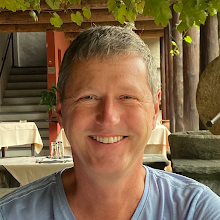- Compliment them on all the good things, overlooking the one bad thing.
- Explain that the salad literally sickened you, carefully detailing exactly what was so awful about it.
- Something between these two extremes.
It seems human nature to find fault with the world around us. It's not even bad thing. After all, how can one improve anything without constructive ideas for making them better? One must counter that with the fact that it's also human nature to take offense easily to anything that isn't entirely flattering. We generally prefer to hear mostly compliments, especially given the fact that we're getting asymptotically closer to the perfection for which we strive. That's why as children we're taught: if you can't say something nice don't say anything at all. Clearly that's a little too black and white, but that's yet another human failing: to over simplify problems and then come up with simplistic solutions to those. One thing to keep in mind in this drive to achieve perfection through criticism is that focusing on positives, or at least noticing them, generally makes one feel better, e.g., I noticed how lovely these maple trees looked and therefore spent much less time noticing that the wild pigs of Berlin had destroyed the lawn around it.

Given we're all so perfect, of course it's a virtue that we should speak our mind whenever a thought enters it. Every criticism we dish out should be seen as clear evidence of our drive for ultimate perfection. The sharper the critique, the more evident is our keen intellectual perceptiveness. Any mature adult ought to see our commentary as the good kind of criticism, i.e., the constructive kind. Those who do not are, well, over-sensitive, short-sighted losers to be perfectly blunt. With folks like that, one might as well waste time explaining to this water plant that the underwater lily bees aren't about to show up to pollinate it.

Personally I'm more than a little fed up with people complaining about the salad; it tends to ruin the dinner party for the host, and even the other guests who don't share the subjective distaste. It's especially disturbing when the host shrieks back a retort about the gawd awful choice of the complainer's dinner wear. One always has to wonder if the complainers could throw a dinner party or their own, especially given their lack of social graces. I'd suggest they think more carefully about the impact of their criticism before dishing it out. Is it actually valid critique to begin with, or is blue cheese simply not their thing? Most important of all, what good will come from the criticism? Is there perhaps a nicer, more effective way to achieve that goal with an approach that doesn't sound so critical? Sharing your favorite salad dressing recipes without a single word of criticism is probably an approach close to optimal.





















































